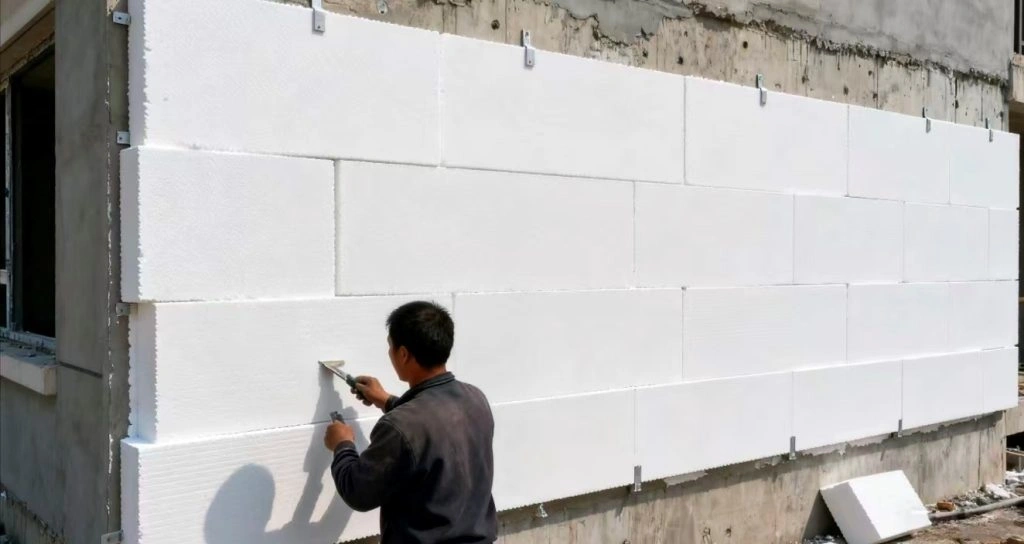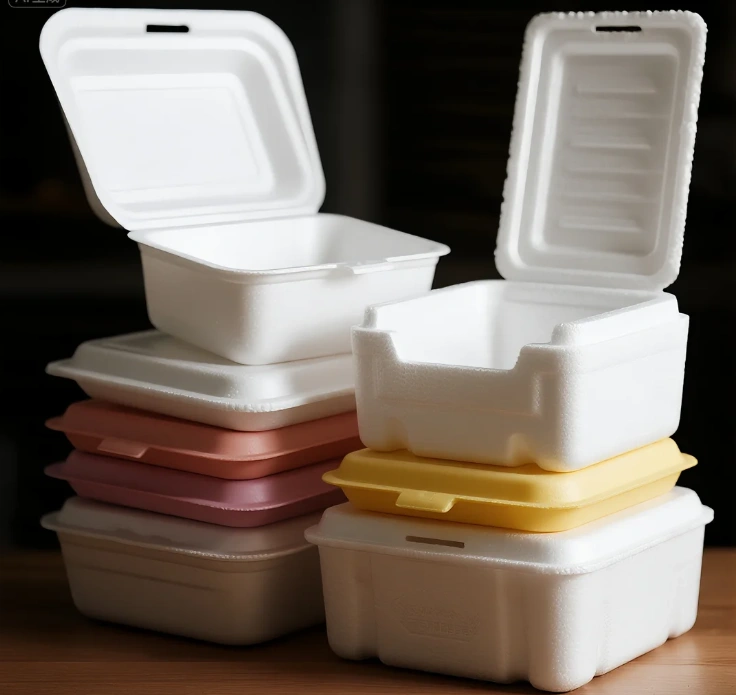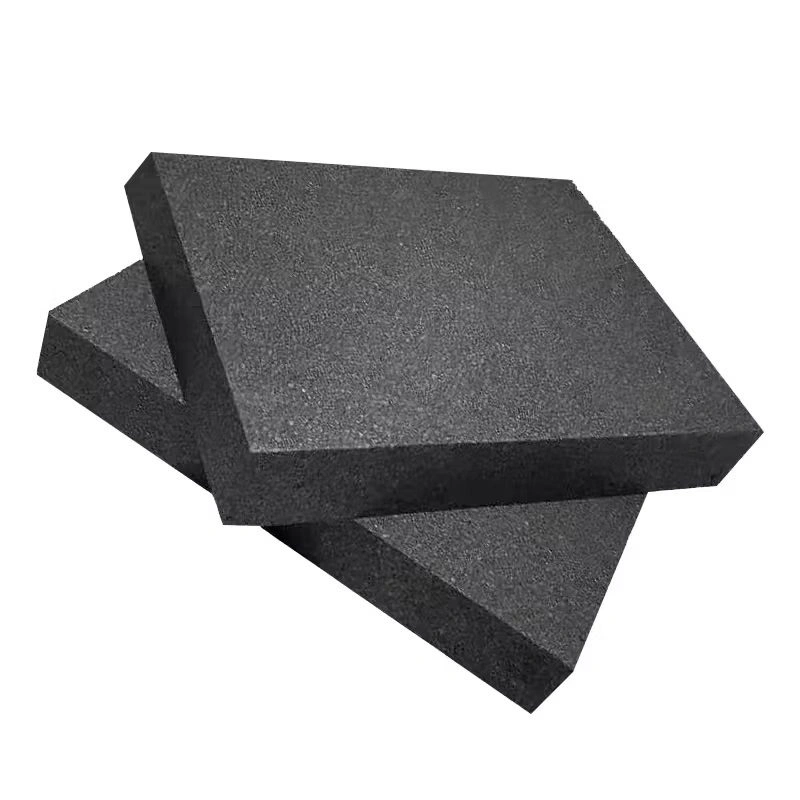You need to know the inner workings of insulation materials before you choose one for your building jobs. EPS stands for Expanded Polystyrene. It is a super light item formed from puffed-up polystyrene beads. More than 98% of it is just air. When you stack it up against wood, cardboard, wool, or fiberglass, EPS turns out to be the cheapest and most power-saving choice. People often ask if EPS foam has closed cells. That question helps you get its strengths and where it fits best.

What is Closed Cell EPS Foam?
Closed cell EPS foam is a kind of expanded polystyrene. In this type, every small cell is shut tight. It forms a wall that stops air and water from traveling inside. The way the cells are built decides how good it is at keeping heat in or out. It also affects how it holds up in real use.
Structural Characteristics of Closed Cell EPS
The build of closed cell EPS foam includes tons of little cells that stand alone. Each one holds air or gas trapped within. That trapped stuff gives it solid power to fight off heat flow. EPS does a fine job at halting heat shifts. Sealed cells mean those air spots stay put. So, no heat sneaks through the foam from one spot to another.
Differences Between Closed Cell and Open Cell Foams
You can tell closed cell foams from open cell ones by how their cells look. Closed cell types have cells that are shut and work solo. They block water like a dam. Plus, they give good strength to hold things up. Open cell foams link their cells together. Air and dampness move freely through them. That setup suits dry spots better. But it makes them bendy and lets them breathe more.
How EPS Foam Achieves a Closed Cell Structure
To make EPS foam’s closed cells, workers use a step-by-step puffing method. They heat polystyrene beads with steam. The beads swell up and stick to each other. All the while, each cell keeps its seal. This step locks in the closed cell setup. That’s what sets EPS foam’s key traits.
Advantages of Using Closed Cell EPS Foam for Insulation
EPS foam’s closed cell setup offers lots of perks. These help it shine in many insulation spots.
Thermal Performance and Energy Efficiency
For insulating buildings, HUASHENG’s EPS foam items really pop. They block heat like champs. This cuts how much energy a building gulps down. They set up a firm wall against heat loss. Indoor temps stay comfy all seasons. Folks rely less on heaters or air conditioners. EPS packs high heat hold with a top R-Value. And that value climbs when it gets colder outside.
Moisture Resistance and Vapor Barrier Capabilities
Thanks to closed cells, EPS foam fights off water well. It soaks up almost no water at all. Mold or decay don’t stand a chance. So, it’s spot-on for jobs needing damp control. Think underground spots or steamy rooms.
Strength, Durability, and Load-Bearing Properties
EPS stands firm against squishing. It’s light, so you can tote it easy. And it soaks up bumps without breaking. Closed cells amp up these features. EPS foam keeps working as insulation even with weight on it. It handles weather and stress without folding.
Cost-Effectiveness Compared to Other Insulation Materials
Compared to rivals, EPS foam saves money big time. It makes buildings sip energy, not guzzle it. Less power use means fewer bad gases in the air. That’s a win for the planet. Blend its strong work, long life, and low price, and closed cell EPS foam looks smart for lasting fixes.
Common Applications of Closed Cell EPS Foam
Closed cell EPS foam bends to fit many roles. It shows up in all sorts of fields and builds.
Residential and Commercial Building Insulation
EPS won’t spark reactions or draw bugs. It’s neutral like that. Builders use it in panels for outer walls, insides, tops, and under slabs. At home, closed cell EPS foam guards foundations, sides, and roofs from heat slips.
Roofing, Wall Systems, and Flooring Uses
EPS fits right for covering walls, tops, slabs, and floors. The closed cells make it tough on damp and heat leaks. In tough spots, B1 flame-retardant EPS particles at 22kg/m³ density do great. They hike energy savings in builds by 14%. Timelines shrink by 18 days over old stuff.
Packaging and Industrial Applications
HUASHENG hands out light but sturdy EPS foam for packing and hauling. It shields items on the move. Shakes, rattles, and hits can’t harm much. EPS cushions shocks for breakables. It keeps food temps steady too. New tech brings EPS boxes with super-low heat flow (λ=0.032W/m·K). They hold chill for 96 hours now. That’s 40% better.

Limitations and Considerations When Choosing EPS Foam
Closed cell EPS foam packs pros, but watch its downsides. Know what it needs to do its best.
Fire Resistance and Flame Retardant Options
Plain EPS foam calls for fire smarts in planning. But choices like Flame retardant grade step up. They match safety rules and codes. These tweaks hold onto EPS perks. They add fire fight for spots that demand it.
Environmental Impact and Recyclability
You can recycle EPS 100%. Heat squeeze or press methods remake it for other jobs. Or melt it back to EPS foam. High-tech compactors shrink volume 50 to 1. Using d-limonene in solvents yields fresh EPS quality. New plants hit over 95% recycle on factory scraps. Carbon mark drops 72% versus making from scratch.
Installation Requirements and Compatibility with Other Materials
Set up closed cell EPS foam right by sealing gaps tight. It has to pair well with build parts. Factor in its ways when sketching plans. This stops heat shortcuts or wet woes.
HUASHENG: A Trusted Supplier of EPS Foam Solutions
HUASHENG dives into EPS from research to sales. It’s rooted in Northwest China but reaches nationwide. Their guide is “innovation-driven, green smart making.”
Overview of HUASHENG’s Product Range
HUASHENG lines up Common grade, Flame retardant grade, Graphite grade, Environmental protection grade, Carbon black grade, and Customized REPS. These spark light, save-energy jobs that last. As prime EPS pros, HUASHENG feeds top materials to fields wide. Recycled EPS foam aids loop economies. Panels insulate for thrift builds. Foam packs guard shipments. Their full-recycle EPS bits loop 5 times. Pack costs fall 28%. Client green scores jump 22 points.
Commitment to Quality, Innovation, and Sustainability
What drives HUASHENG is fresh ideas. They pour funds into probes and builds. New stuff, ways to make, and fits get tested. Top EPS foam pros, HUASHENG mixes world tech with sharp lines. EPS shines in pack, squash hold, and heat block. They care for earth too. Controls watch every step. ISO stamps it. Energy dips over 30%.

Conclusion
Pick closed cell EPS foam for insulation wins. It blocks heat strong, shrugs water, and costs little. Sealed cells lock in heat fight and tough build. Homes, plants, packs all gain. HUASHENG brings fresh, green fixes like recycle EPS and fire-safe picks. They fit needs broad and back green ways. Grasp its heat caps and right fit for safe wins on jobs.
FAQs
Q1: Is closed cell EPS foam waterproof?
A: Its sealed cells fend off damp good. Not total waterproof, but close. Setup halts soak and steam pass. Great for wet watch spots. Extreme wet might let a tad in.
Q2: How does closed cell EPS foam compare to spray foam insulation?
A: Both hold heat fine. But how you put them differs. EPS sheets or chunks go in steady. Spray foam foams out from goo. EPS stays shape long and suits big jobs cheap. Spray seals drafts top-notch.
Q3: Can closed cell EPS foam be recycled?
A: Sure can. Break it, reshape to new bits. Or grind to beads again. Loops many times with traits hold. High tech flips scrap to base stuff for fresh make.






